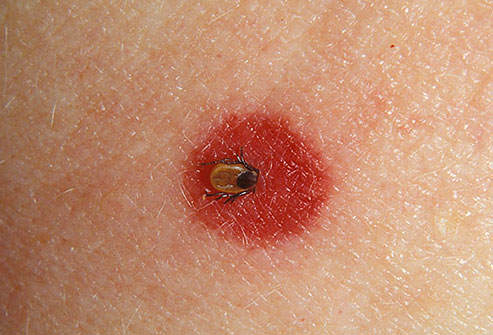5 Vital Details You Must Understand About Borrelia Burgdorferi
- font size decrease font size increase font size
 Lyme disease is a tick born infection that is caused by bacteria species which are members of the genus Borrelia. The illness was named after Lyme, a town located in Connecticut, where it was first discovered in 1975. Lyme disease remains to be a critical community health problem in a few regions of America.
Lyme disease is a tick born infection that is caused by bacteria species which are members of the genus Borrelia. The illness was named after Lyme, a town located in Connecticut, where it was first discovered in 1975. Lyme disease remains to be a critical community health problem in a few regions of America.
The fact is, it is considered to be the most widespread tick-borne infection in America whilst Borrelia burgdorferi sensu stricto is recognized as the key cause behind it. Listed here are additional truths that you need to know about borrelia burgdorferi:
It was discovered by U.S. scientist Willy Burgdorfer
Although information of Lyme disease first revealed in 1975, it was not until 1982 that the etiologic agent of the disease called borrelia burgdorferi' was discovered. It was named after Willy Burgdorfer, the American researcher who discovered the particular bacteria. Burgdorfer separated the spirochetes of the Borrelia genus from that of the mid-guts of the Ixodes ticks. He was then able to present that the spirochetes reacted with immune serum from the those who were experiencing Lyme infection.
It is a spirochete and may be very hard to spot under a light microscope
Spirochetes are a classification of phyogenetically-disctinct bacterium that has a distinctive way of motion portrayed by axial filaments. Spirochetes have already been known to flourish in places that are viscous such as the intestinal tracts of creatures. Their particular way of mobility are discovered to be an adaptation of the viscous environments which they are usually prevalent. Spirochetes are also extremely small and, with regards to Borrelia,their size is 20-30um which makes them to belong below the particular resolving powercapacity of regular light microscopes. This makes them difficult to be detected under such laboratory equipment and need to have dark-field microscopy in order for them to be effectively examined.
It could be cultivated in a controlled study area
Borrelia needs a quite complex development medium for it to be cultivated in vitro. The development channel commonly utilised for it is known as Barbour-Stoenner-Kelly (BSK) medium. Borrelia sucked from ticks and from the human blood, cerebrospinal fluid and skin of patients have been effectively grown by using the said channel.
It's one of the many well-established and acknowledged traces of borreliae
Borrelia could be subdivided into many subdivisions but only 3 traces have been proven and accepted. These 3 are recognized borrelia burgdorferi sensu stricto, Borrelia garinii and Borrelia afzelii, but borrelia burgdorferi sensu stricto is the term used to collectively relate to all three genospecies. All of the isolates from the America are categorized as borrelia burgdorferi sensu stricto only while countries in Europe and Asia have found all three examples.
It might infect the tissue and blood of creatures
Borrelia burgdorferi can contaminate the blood and tissues of mammals as well as birds. It has been suggested that the white-footed mouse is the natural tank of this kind of bacteria. The spirochetes are usually moved to warm-blooded animals including people with the bite of the contaminated tick. Lyme illness is the resulting pathology of the infection affect humans, pet dogs and other creatures.
Among the best sorts of prevention against the effects of borrelia burgdorferi is awareness and knowledge of its dynamics.
------------------------------
Find out more about Borrelia burgdorferi at http://www.lymediseaseblog.com/how-lyme-disease-affects-immune-system/
